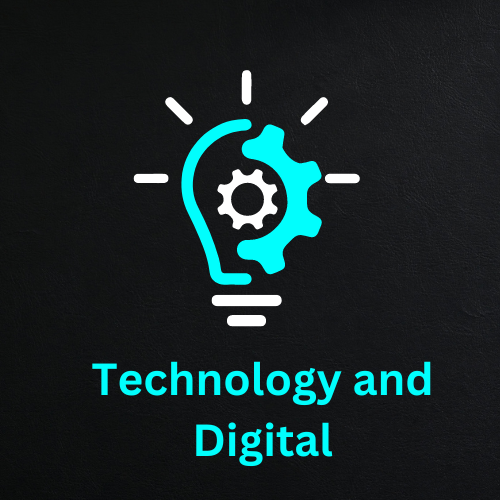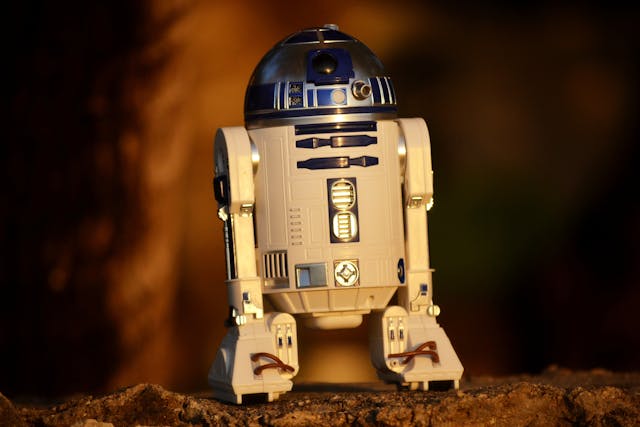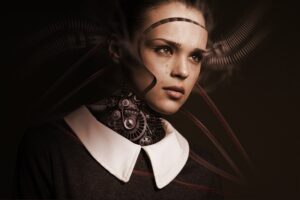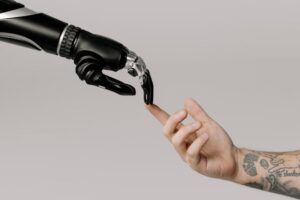
AI and Creativity: Exploring the Intersection of Art and Technology
In today’s world, technology and creativity are no longer seen as separate entities. Instead, they intersect in fascinating and unexpected ways. The blend of artificial intelligence (AI) and art is reshaping our understanding of creativity, challenging traditional boundaries, and opening up new possibilities. This article dives deep into the intersection of AI and creativity, exploring how technology is transforming art, music, literature, and more.
Historical Context of AI in Art
Early Experiments and Pioneers
The journey of AI in the creative world began with early experiments that seemed more like science fiction than reality. One of the pioneers, Harold Cohen, developed AARON, a computer program capable of creating abstract art. Cohen’s work laid the groundwork for future explorations, demonstrating that machines could participate in the creative process.
Evolution of AI Technology
As AI technology advanced, its applications in art became more sophisticated. Machine learning and neural networks allowed AI to analyze and replicate artistic styles, creating works that were not only algorithmically sound but also aesthetically pleasing. The evolution of AI transformed it from a novelty into a legitimate creative tool.
Initial Skepticism and Breakthroughs
Despite the breakthroughs, early AI-generated art faced skepticism. Critics questioned the authenticity and emotional depth of machine-created works. However, as AI’s capabilities improved, it began producing pieces that challenged these doubts, proving that creativity could emerge from algorithms.
AI in Visual Arts
Generative Art and Algorithms
Generative art is a form of art where the artist uses algorithms to generate unique pieces. AI programs like DeepArt and Google’s DeepDream have become well-known for their ability to create stunning visuals. These tools analyze existing artworks and generate new pieces that often combine surrealism with intricate detail.
Case Studies: DeepArt and DeepDream
DeepArt and DeepDream have made significant impacts on the visual arts scene. DeepArt transforms photos into artworks inspired by famous artists’ styles, while DeepDream enhances and morphs images to produce dream-like visuals. These tools demonstrate AI’s potential to create art that is both innovative and captivating.
AI’s Role in Design: Tools Like Adobe Sensei
In the design world, AI acts as a powerful assistant. Adobe Sensei, for instance, uses AI to help designers by suggesting layout improvements, color schemes, and even generating design elements. This not only speeds up the creative process but also democratizes design by making professional-level tools accessible to everyone.
AI in Music Composition
Algorithmic Composition: AIVA and MuseNet
In music, AI has taken on the role of composer. Tools like AIVA (Artificial Intelligence Virtual Artist) and MuseNet compose original music across various genres. These AI programs are trained on extensive datasets of musical works, allowing them to understand and create complex compositions that resonate with listeners.
Enhancing Human Creativity: Amper Music
AI also enhances human creativity in music. Amper Music, for example, allows musicians to input parameters and generate music that fits their vision. This collaboration between AI and human artists leads to innovative compositions that blend the best of both worlds.
Collaboration Between Musicians and AI
Musicians are increasingly collaborating with AI to push the boundaries of what’s possible in music. AI can suggest new melodies, harmonies, and even lyrics, providing artists with a fresh perspective and new ideas. This partnership enhances the creative process and results in unique musical pieces.
AI in Literature
Natural Language Processing (NLP) and Creative Writing
Natural Language Processing (NLP) has revolutionized creative writing. AI systems like OpenAI’s GPT-3 can generate coherent and engaging prose, from short stories to full-length novels. These AI writers mimic human language, producing texts that are both grammatically correct and stylistically appealing.
AI-Generated Poetry and Prose
AI’s capabilities extend to poetry and prose, crafting pieces that evoke emotions and imagination. AI-generated poetry often explores new forms and structures, challenging traditional poetic conventions and offering fresh literary perspectives.
Literary Assistance Tools: Grammarly and Hemingway Editor
For writers, AI-powered tools like Grammarly and Hemingway Editor provide invaluable assistance. These tools analyze text for grammar, style, and readability, helping writers refine their work and overcome creative blocks. By offering real-time feedback, they enhance the writing process and improve the overall quality of the work.
AI in Film and Animation
AI in Scriptwriting and Storytelling
AI is making its mark in the film industry, particularly in scriptwriting and storytelling. Algorithms analyze successful scripts to guide writers in crafting compelling narratives. Some AI systems have even written entire scripts, showcasing their potential to contribute to the cinematic arts.
Automating Animation: Character Animation and Scene Rendering
In animation, AI streamlines the production process by automating tasks like character animation and scene rendering. This efficiency allows animators to focus on the creative aspects of their work, resulting in high-quality animations produced in a fraction of the time.
Case Studies: AI-Generated Scripts and Visual Effects
AI-generated scripts and visual effects are becoming more prevalent in the industry. For instance, AI has been used to generate dialogue, create special effects, and even assist in editing. These advancements highlight AI’s potential to revolutionize the way films are made.
Philosophical Perspectives
Redefining Creativity
The intersection of AI and creativity forces us to rethink the concept of creativity itself. Traditionally, creativity has been seen as a uniquely human trait, involving originality, emotion, and personal experience. However, AI challenges this notion by producing works that are both original and impactful.
The Role of the Human Artist
Despite AI’s growing capabilities, the human artist remains essential. Artists guide AI, providing the vision and context that machines lack. This collaboration ensures that AI-generated works are meaningful and aligned with human aesthetics.
AI’s Potential Limitations and Strengths
While AI excels in pattern recognition and data analysis, it lacks the emotional depth and subjective experience that define human creativity. However, its ability to process vast amounts of information and generate novel ideas makes it a valuable tool in the creative process.
Ethical Considerations
Authorship and Ownership
The question of authorship and ownership of AI-generated art is complex. Who owns the rights to a piece created by an algorithm? Is it the programmer, the user, or the AI itself? These questions challenge existing legal frameworks and require new approaches to intellectual property.
Bias and Representation in AI-Generated Art
AI systems are only as unbiased as the data they are trained on. If the training data is biased, the AI’s outputs will reflect those biases. Ensuring diversity and fairness in AI-generated art is crucial to prevent the perpetuation of stereotypes and exclusion.
Impact on Creative Professions
The rise of AI in creative industries has sparked concerns about job displacement. While AI can enhance productivity and innovation, it also threatens traditional roles. Balancing the benefits of AI with the need to protect creative professions is a significant ethical challenge.
Educational Integration
AI in Art Education
AI is transforming art education by providing new tools and resources for students and educators. AI-powered platforms offer personalized learning experiences, enabling students to explore and develop their artistic skills in innovative ways.
Training the Next Generation of Artists
Educators are incorporating AI into their curricula to prepare the next generation of artists. By understanding how to work with AI, students can leverage technology to enhance their creativity and stay competitive in a rapidly evolving industry.
AI-Powered Educational Platforms
AI-powered educational platforms like Coursera and Khan Academy use AI to offer customized learning experiences. These platforms provide students with tailored content and feedback, helping them achieve their educational goals more effectively.
Case Studies and Examples
The Next Rembrandt Project
The Next Rembrandt project exemplifies the intersection of AI and art. Using deep learning algorithms, researchers analyzed Rembrandt’s works to create a new painting in his style. The result was a stunning piece that captured the essence of Rembrandt’s artistry.
AI in Music Production: Hello World Album
The Hello World album, produced in collaboration with AI, showcases the potential of AI in music production. Musicians and AI worked together to create unique tracks, blending human creativity with machine-generated melodies and harmonies.
AI-Generated Literature and Films
AI-generated literature and films are becoming more common, with projects like AI-written novels and movies that utilize AI-generated scripts and effects. These examples demonstrate AI’s potential to contribute to diverse forms of creative expression.
Future Prospects
Advancements in AI Technology
The future of AI in the creative arts is bright, with continuous advancements in technology. As AI becomes more sophisticated, its ability to contribute to art, music, literature, and film will only increase, leading to new and exciting forms of artistic expression.
Potential for New Forms of Artistic Expression
AI opens up possibilities for entirely new forms of artistic expression. From interactive installations to AI-generated virtual realities, the future of creativity is boundless. Artists and technologists will continue to explore these possibilities, pushing the boundaries of what art can be.
Predictions for the Future of AI in the Arts
Experts predict that AI will become an integral part of the creative process, assisting artists in ways we can only imagine. As AI technology evolves, it will enable artists to explore new territories and create works that were previously unimaginable.
Challenges and Opportunities
Balancing AI and Human Creativity
The challenge lies in balancing AI and human creativity. While AI can enhance and inspire, it should not replace the human touch that makes art meaningful. Finding this balance is key to ensuring that AI remains a tool for creativity, not a substitute for it.
Overcoming Skepticism and Resistance
Skepticism and resistance to AI in the arts are natural, given its disruptive potential. However, as AI continues to prove its value, these attitudes are likely to shift. Education and awareness are essential to overcoming these barriers and embracing AI’s potential.
Embracing Innovation
Embracing innovation requires an open mind and a willingness to experiment. Artists, educators, and technologists must collaborate to explore AI’s possibilities and integrate it into the creative process. By doing so, they can unlock new levels of creativity and innovation.
Conclusion
The intersection of AI and creativity represents a transformative journey in the world of art and technology. As AI continues to evolve, it will undoubtedly play a more significant role in the creative process, challenging our perceptions of art and pushing the boundaries of what’s possible. While there are challenges to overcome, the potential for innovation and new forms of artistic expression is immense. The future of creativity is bright, and AI is set to be a powerful catalyst in this exciting journey.
FAQs
How does AI contribute to creativity?
AI contributes to creativity by offering new tools and techniques that enhance and inspire human artists. It can generate ideas, assist in the creative process, and produce original works across various artistic disciplines.
Can AI truly create original art?
AI can create original art by using algorithms to generate unique pieces based on data and patterns. While the creativity comes from the machine, the vision and context provided by human artists ensure that the work is meaningful and impactful.
What are the ethical implications of AI-generated art?
The ethical implications include questions of authorship, ownership, and bias. Ensuring fair representation and addressing the potential impact on creative professions are critical considerations in the development and use of AI in the arts.
How does AI assist writers and musicians?
AI assists writers and musicians by providing tools for generating content, refining work, and offering new perspectives. In writing, AI can suggest improvements and generate text, while in music, it can compose melodies and harmonies or suggest creative directions.
What is the future of AI in the creative arts?
The future of AI in the creative arts is promising, with continuous advancements leading to new forms of artistic expression. AI will likely become an integral part of the creative process, offering unprecedented opportunities for innovation and collaboration.




